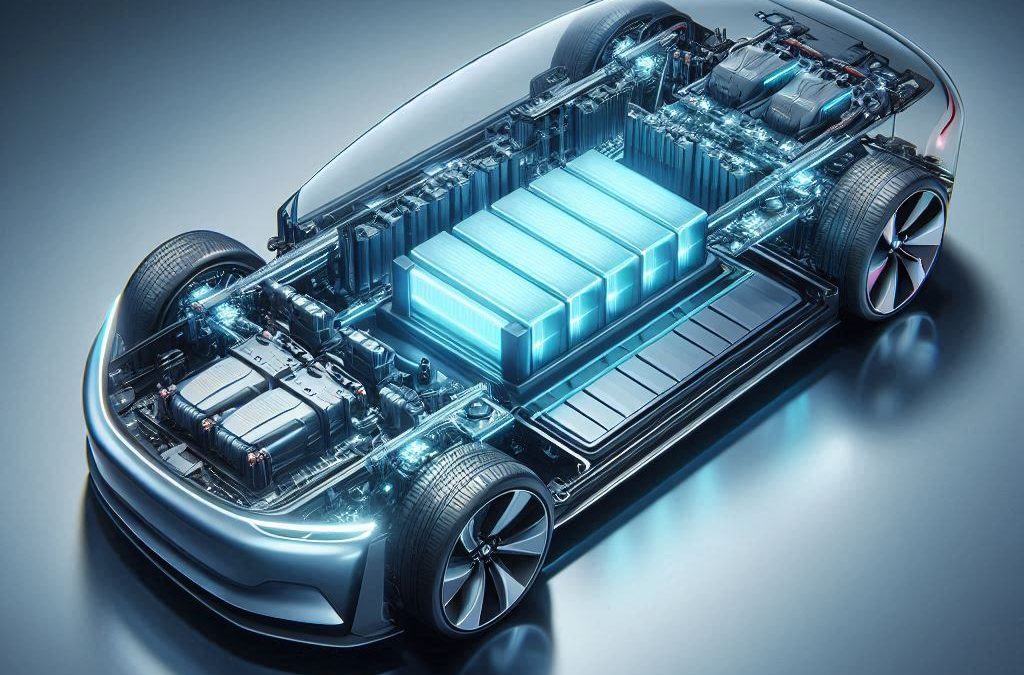The electric vehicle (EV) revolution is well and truly underway, but the technology powering it is on the verge of its own monumental shift. For years, the trusty lithium-ion battery has been the silent workhorse of the EV world. However, a new contender, the solid-state battery, is moving out of the laboratory and promises to redefine EV performance, safety, and practicality.
But what is the difference between the two, and what will this change actually mean for drivers? Let’s break down the powerhouse technologies set to define the future of motoring.
The Current Standard: Lithium-Ion Batteries
Think of the battery in your current smartphone or laptop, and you have a basic understanding of a conventional lithium-ion battery. Inside an EV’s battery pack, thousands of these individual cells work together.
At its core, a lithium-ion battery consists of four key components: a positive electrode (cathode), a negative electrode (anode), a separator, and a liquid electrolyte. The electrolyte is a chemical soup that allows charged lithium ions to flow between the anode and cathode. When you charge your car, ions flow from the cathode to the anode. When you drive, they flow back, releasing the energy that powers the electric motor.
This liquid electrolyte has been a cornerstone of battery technology for decades, but it also comes with limitations. It’s flammable, can be sensitive to extreme temperatures, and its energy density—the amount of energy stored for a given weight—is slowly approaching its physical limit.
The Challenger: Solid-State Batteries
The game-changing innovation in a solid-state battery is right there in its name. It replaces the volatile liquid electrolyte with a thin, stable, solid material, often made from ceramics or polymers.
This fundamental change in design unlocks a cascade of potential benefits. The solid electrolyte is not flammable, which immediately boosts the battery’s safety profile by dramatically reducing the risk of thermal runaway and fire. By eliminating the need for the bulky housing and cooling systems required to manage a liquid electrolyte, the entire battery pack can become smaller, lighter, and more energy-dense.
This allows manufacturers to use a high-capacity lithium metal anode, something that is notoriously difficult and unsafe to use with liquid electrolytes. The result is a battery that can store significantly more energy in the same amount of space.
Head-to-Head: What This Means for Drivers
| Feature | Standard Lithium-Ion Battery | Solid-State Battery (Projected) |
|---|---|---|
| Range | Good, but limited by weight and size. | Significantly Higher. More energy in the same space means EVs could travel much further on a single charge. |
| Charging Speed | Varies, but can take 20-60 minutes for a fast charge. | Much Faster. Potential to charge from 10% to 80% in as little as 10-15 minutes. |
| Safety | Generally safe with robust management systems. | Inherently Safer. The solid electrolyte is not flammable, reducing fire risk. |
| Lifespan | Good for 10-20 years, but degrades with charge cycles. | Longer Lasting. More tolerant to repeated charging and discharging, leading to a longer operational life. |
| Weight | Heavy, impacting vehicle efficiency and handling. | Lighter & More Compact. A lighter battery improves vehicle efficiency, handling, and performance. |
The Road Ahead: Challenges and Timelines
While solid-state technology sounds like a silver bullet for EVs, there are hurdles to overcome. The primary challenges are cost and manufacturing at scale. The materials used are currently expensive, and the complex manufacturing process is yet to be perfected for mass production.
Despite this, the race to commercialise solid-state batteries is well and truly on. Major automotive players including Toyota, Nissan, Volkswagen, and Stellantis are investing billions into research and development. Toyota, a long-time leader in this field, and other industry giants are projecting that the first EVs equipped with solid-state batteries could hit the market between 2027 and 2028, with pilot programs potentially starting even sooner.
The transition won’t happen overnight, but the promise is clear. Solid-state batteries represent a pivotal step towards EVs that are not only cleaner but also safer, longer-ranging, and faster to charge than ever before. This isn’t just an evolution; it’s the next generation of electric power.

